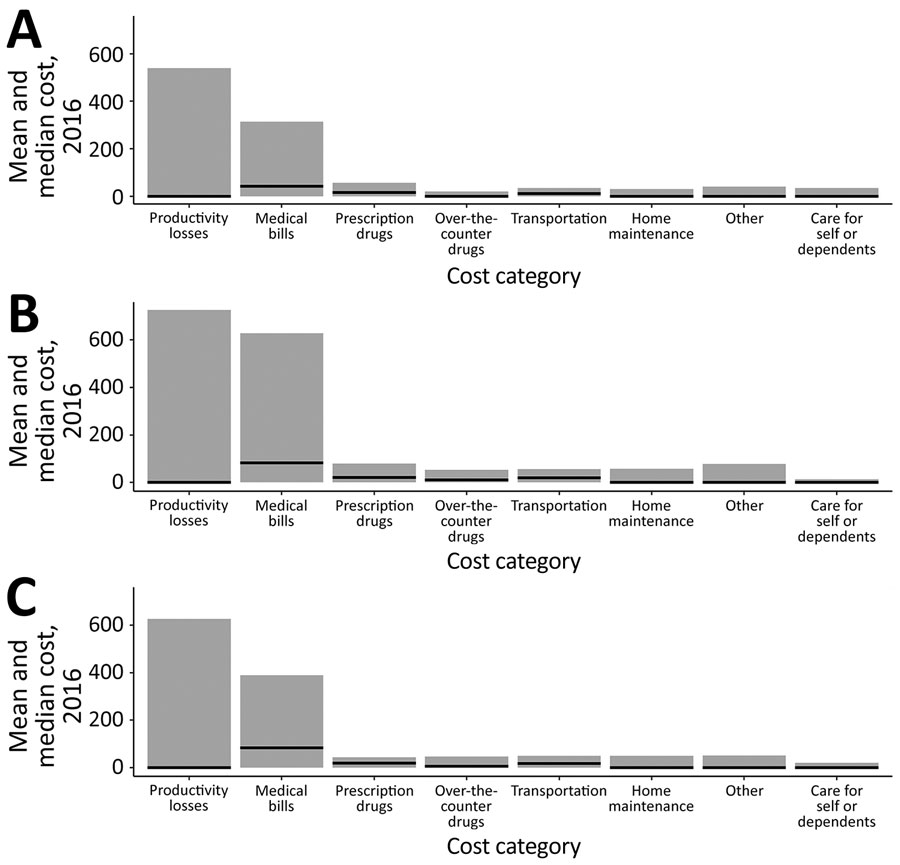Volume 28, Number 6—June 2022
Research
Economic Burden of Reported Lyme Disease in High-Incidence Areas, United States, 2014–2016
Figure 2

Figure 2. Mean and median cost per participant, by Lyme disease category and cost category of the total patient cost in high-incidence areas of the United States, 2014–2016. A) Confirmed localized disease; B) confirmed disseminated disease; C) probable disease. Black lines indicate median cost.
Page created: April 03, 2022
Page updated: May 22, 2022
Page reviewed: May 22, 2022
The conclusions, findings, and opinions expressed by authors contributing to this journal do not necessarily reflect the official position of the U.S. Department of Health and Human Services, the Public Health Service, the Centers for Disease Control and Prevention, or the authors' affiliated institutions. Use of trade names is for identification only and does not imply endorsement by any of the groups named above.